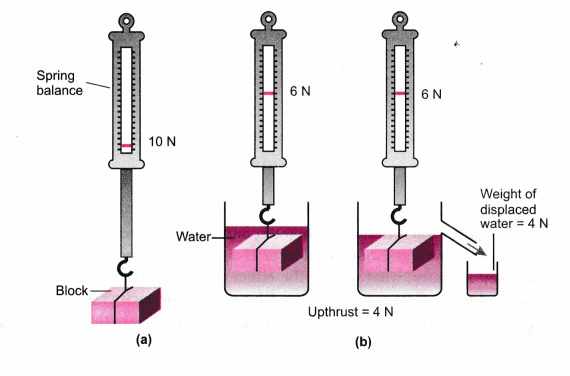State and explain the experiment for verification of Archimedes’ principle.
Name the devices based on Archimedes’ principle.
Answer:
Archimedes’ principle: The Archimedes’ principle states that if a body is immersed in a fluid, wholly or partly, then it loses its weight equal to the weight of fluid displaced by the immersed part of the body.
Experimental verification: Take a solid body which is heavier than water and also insoluble in water. Suspend it from the hook of a spring balance to find its weight in air as shown in Fig. (a).

Let its weight in air be W1.
Now take an overflow vessel filled with water up to the overflow mark and place a measuring cylinder below the overflow tube as shown in Fig. (b). Now suspend the given solid from hook to spring balance and lower the solid in the water till it is completely immersed in water
Note the reading of the spring balance. It gives the weight of solid body in water. Let it be W2.
Loss of weight in solid when immersed in water = W1 - W2.
The water which overflowed when solid was immersed is collected in the cylinder placed ‘ below the overflow tube. Measure this volume.
Let it be V.
V = Volume of water displaced by the solid immersed in it.
Then weight of water displaced by solid = Vpg,
where, p = density of water and g= acceleration due to gravity.
It is found that W1 - W2 loss in weight of solid when immersed in water is equal to the weight of the water displaced by the body. This verifies Archimedes’ principle.
Devices based on Archimedes’ principle: Design of all those devices which float in the fluid is based on Archimedes’ principle. These devices such as hydrometers, lactometers, balloons, boats and ships, submarines, etc., work according to Archimedes’ principle.